The people of China have dubbed Xiechi as the “Dead Sea of China”, praising its enchanting beauty and miraculous healing properties.
Xiechi Lake was featured in a special program by Chinese television in 2019, commemorating the 70th anniversary of the founding of the People’s Republic of China.

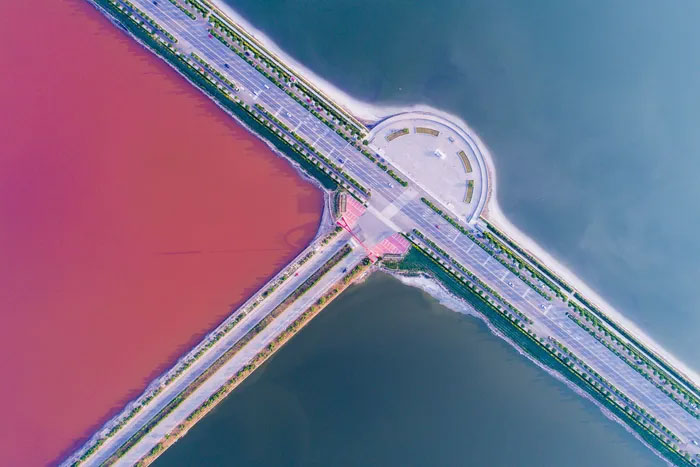
Xiechi Lake, also known as Yuncheng Salt Lake. (Photo: Peapix).
How Did Yuncheng Salt Lake Come to Be?
There are three types of salt lakes in the world: carbonate, chloride, and sulfate. The Dead Sea and the Great Salt Lake in Utah are both chloride lakes. However, Yuncheng Salt Lake falls into the last category, sulfate lakes.
The stunning water color of Yuncheng Salt Lake – China’s vibrant “Dead Sea.” Photo: CNN.
Professor Bernie Owen, a geographer at Hong Kong Baptist University, explains: “If the sulfate content in the lake water exceeds the calcium, all the calcium will quickly be used up, leaving the lake with an excess of sulfate, resulting in a sulfate lake.”
Xiechi is also a “closed basin lake” – meaning it does not flow into rivers or oceans – which explains why the salt content remains so high.
According to Professor Owen: “Water always comes with salt; as water drains away, the salt remains, more water flows into the lake with salt, and then gradually evaporates. The salt continues to stay. There’s no outlet for this issue. The lake water will gradually become saltier, much saltier.”
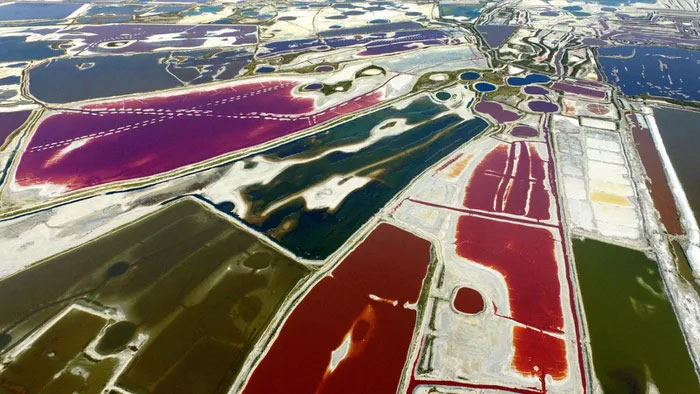
Vibrant colors from above Yuncheng Salt Lake. (Photo: CNN).
But what creates these beautiful colors that captivate many photographers? They are related to the aquatic animals and plants living in the water.
“If you soak shrimp in saltwater, they turn red,” Owen says. “There’s a tiny organism called rotifer, which produces a purple color. Additionally, there are many green and orange algae that appear in saltwater lakes.”
These salt lakes can freeze, although not as quickly as regular freshwater lakes. Saltwater freezes at lower temperatures than freshwater.
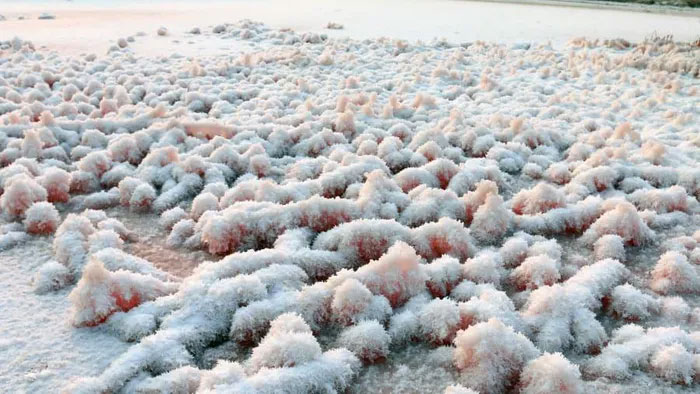
The impressive shape of Yuncheng Salt Lake when frozen. (Photo: CNN).
A Shining Star
In an effort to gain international recognition, China is taking steps to have Xiechi Lake listed as a UNESCO World Heritage Site. In a social media post on WeChat in 2019, Luo Huining, the Secretary of Shanxi Province, announced that local officials had started the registration process.
“Yuncheng Salt Lake is the crystallization of Chinese culture and civilization. The salt lake plays a positive role in promoting our pride and spreading our cultural heritage,” he asserted.
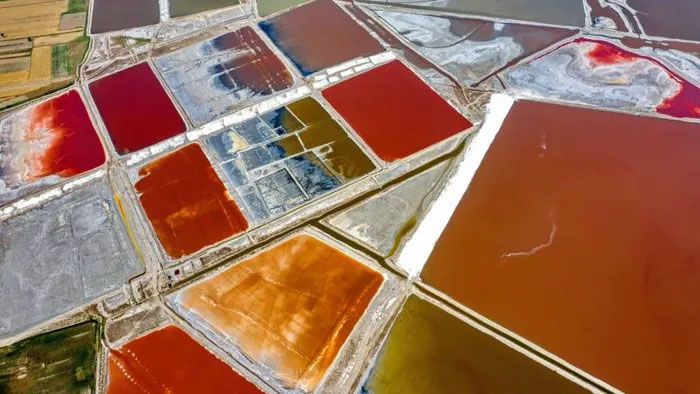
From above, Yuncheng Salt Lake looks like a watercolor palette for artists. (Photo: CNN).
Currently, China has 56 UNESCO World Heritage Sites, ranking second only to Italy on the overall list. This achievement is even more impressive considering the country’s first UNESCO-recognized heritage sites – including the Great Wall and the Forbidden City – were only designated in 1987.
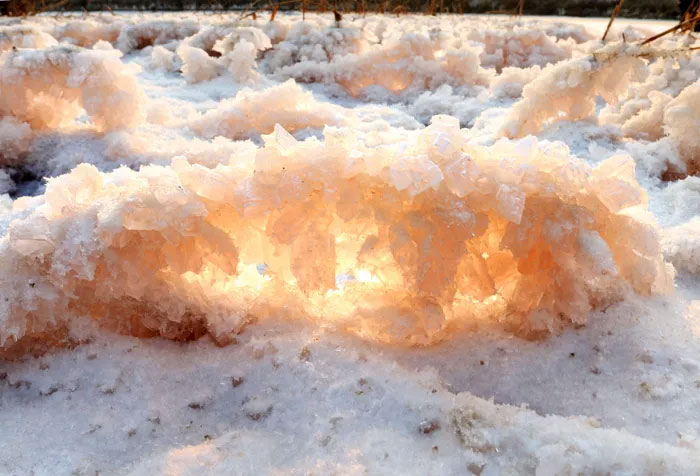
The vibrant ice flowers of Yuncheng Salt Lake. (Photo: ChinaPlus).
According to a statement from the Yuncheng city government, Xiechi Lake contains black mud with restorative and healing properties – similar to the Dead Sea. Many reports have also claimed that people can float on the water’s surface without sinking – coincidentally, just like the Dead Sea.


















































